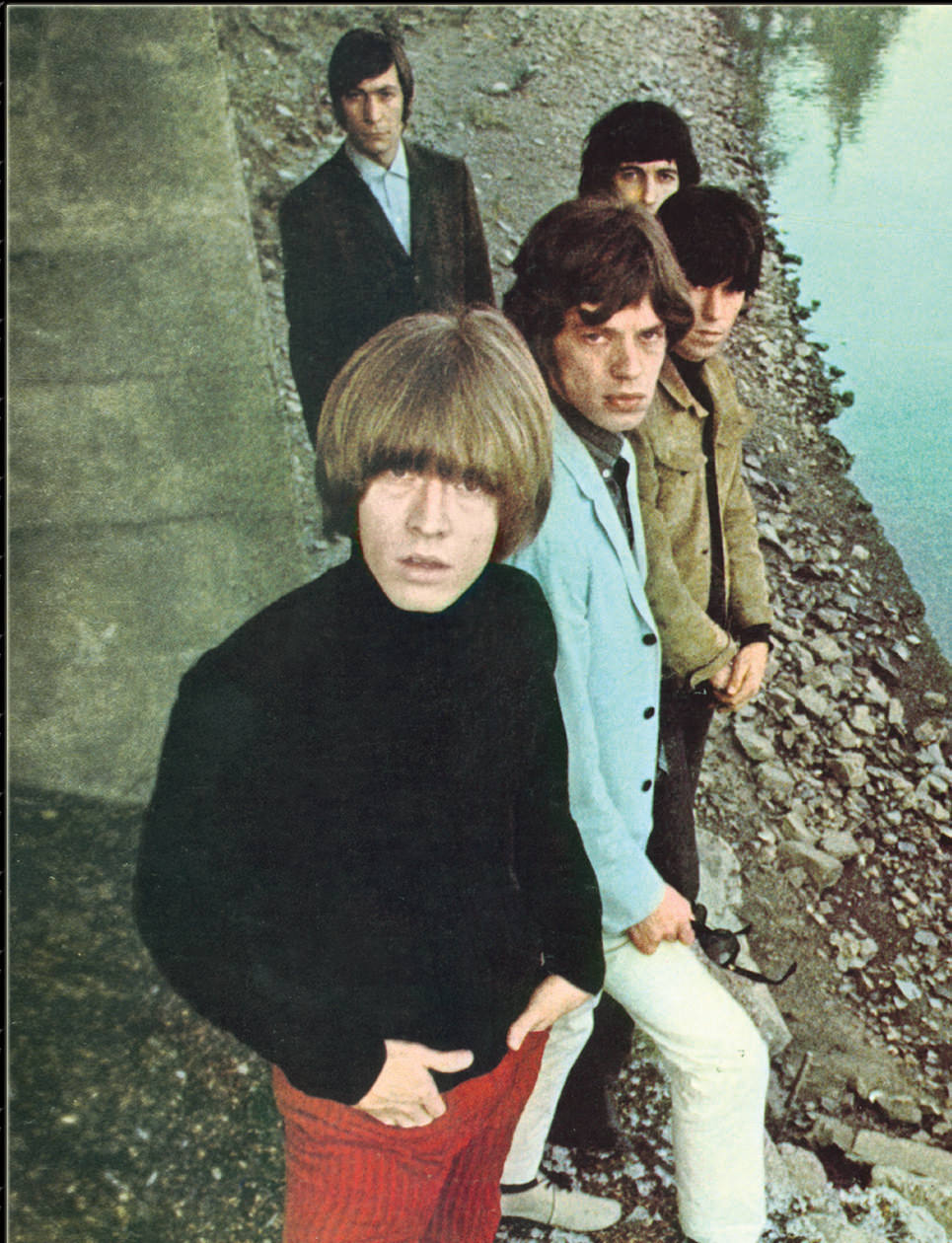-
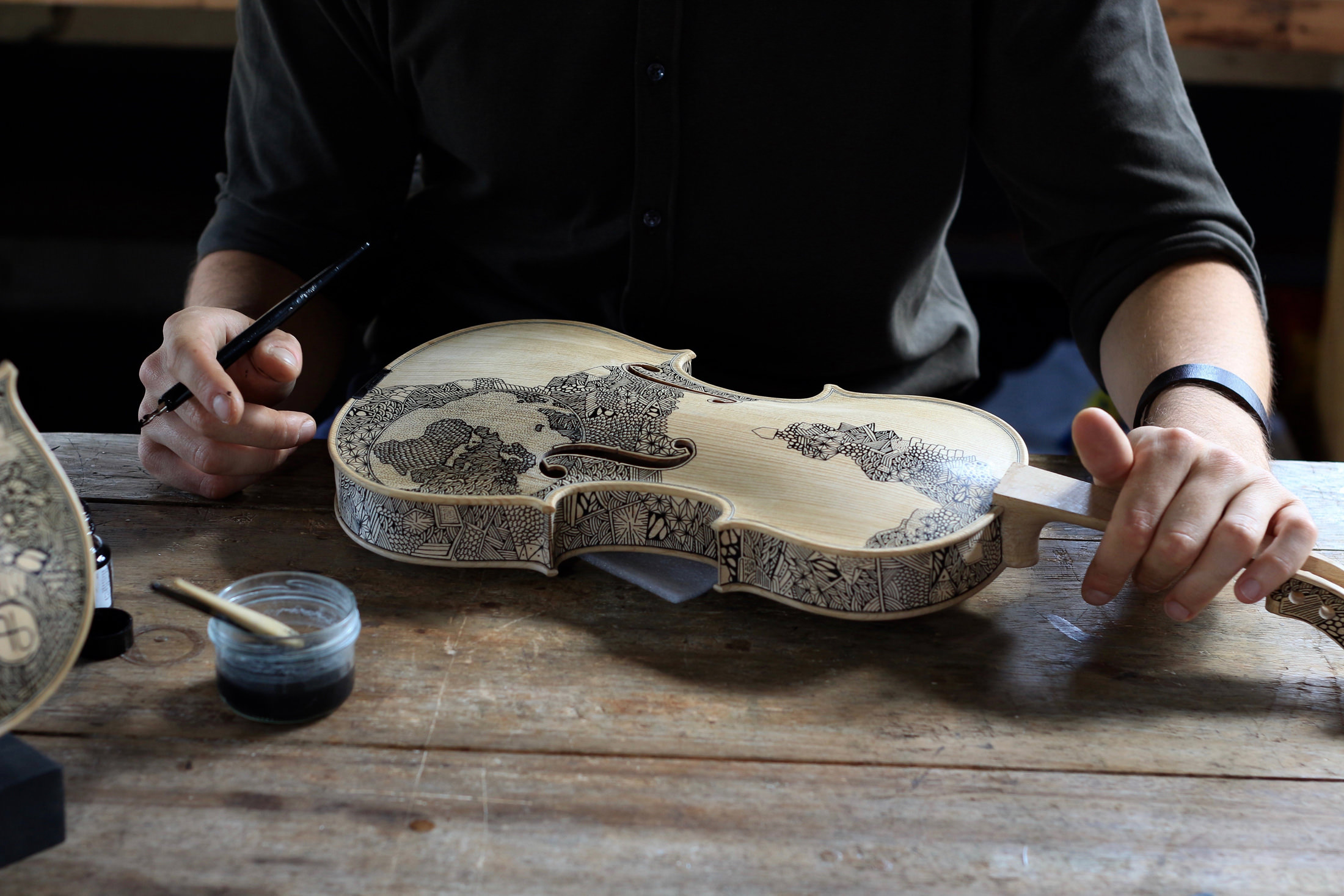
London-based Italian artist Leonard Frigo specializes in intricately decorated violins.
-
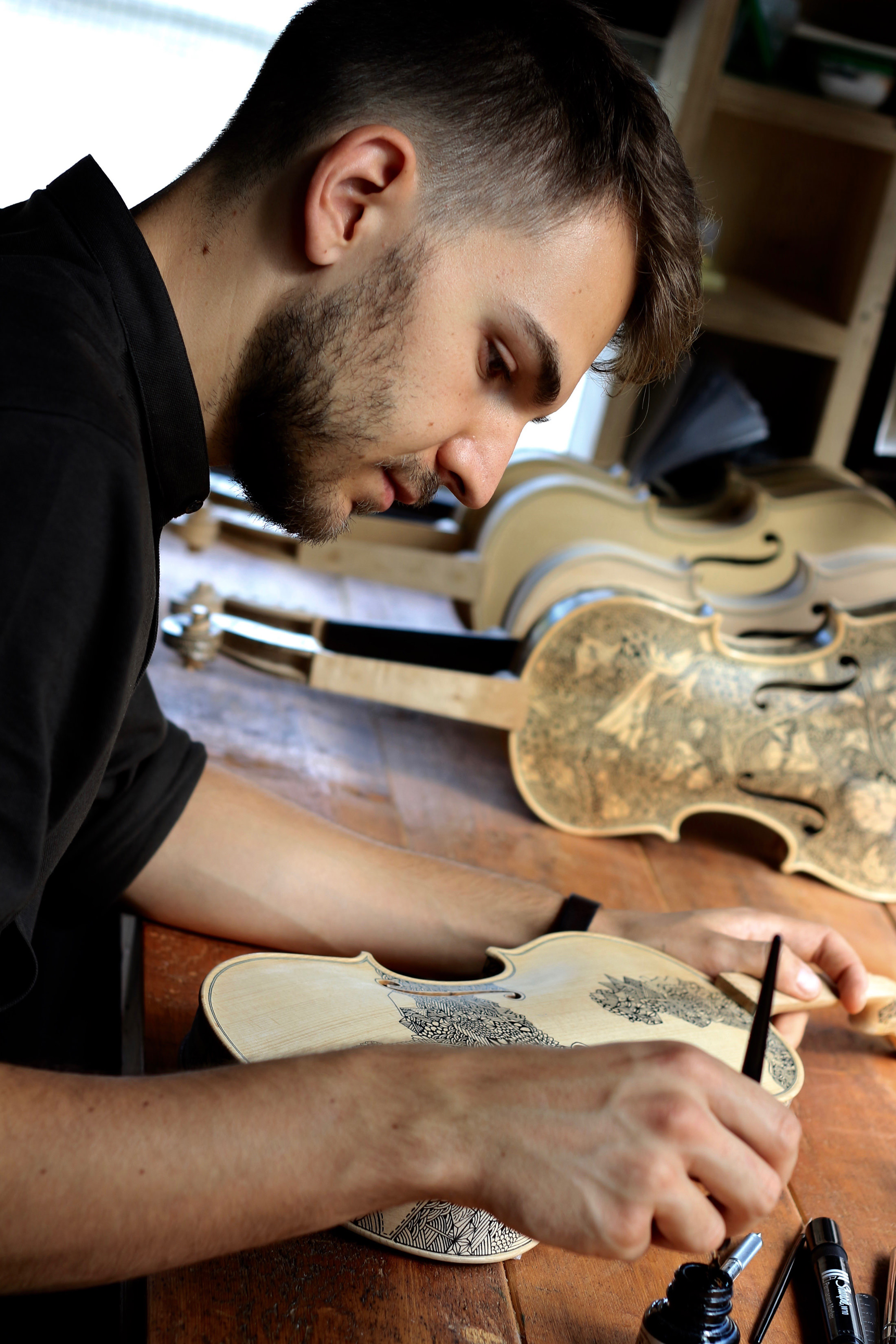
Frigo conveys, in pictorial form, a biography—either of an artist who inspires him—or with special commissions, a history of the client’s family.
-
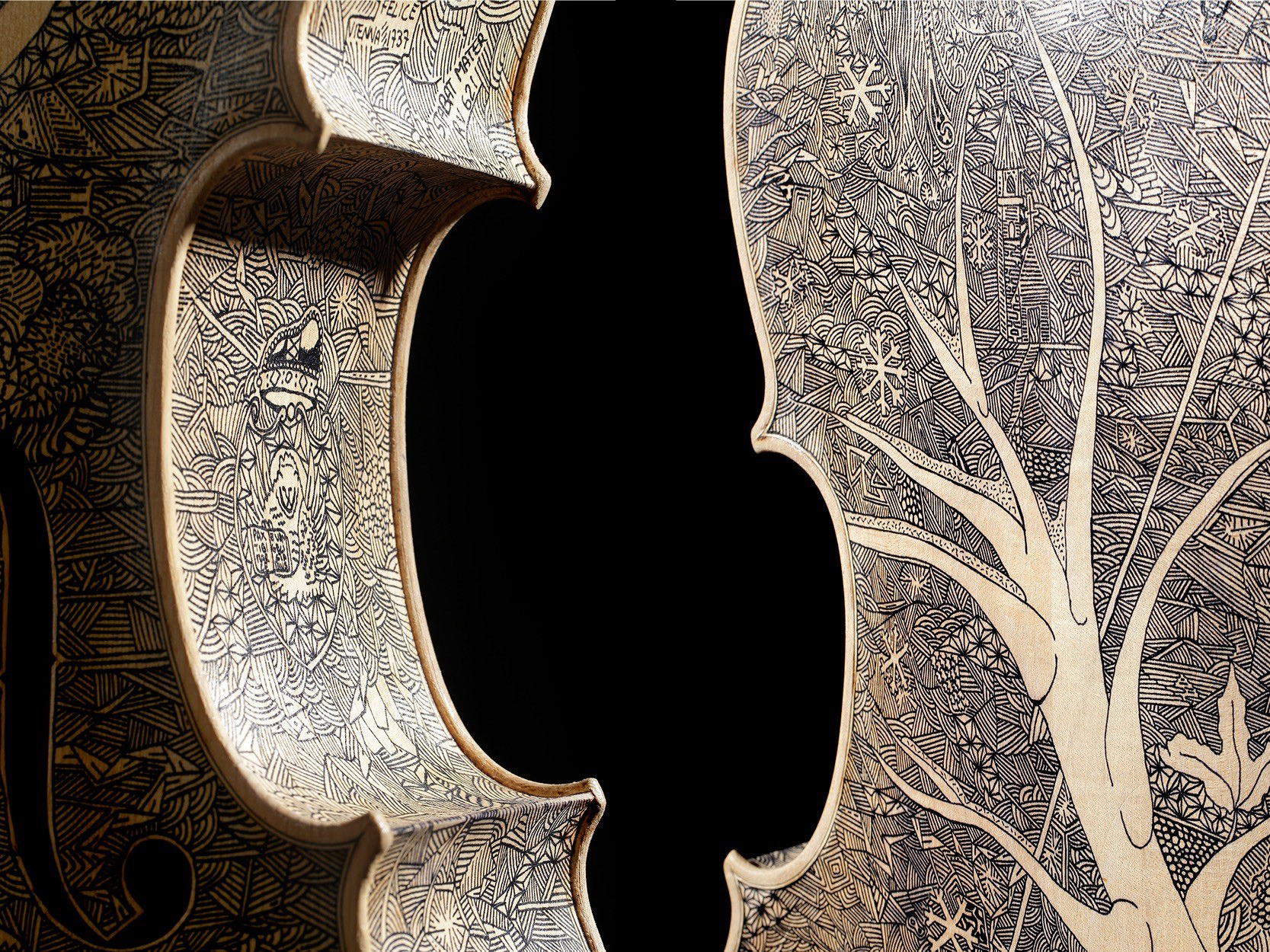
Each art piece takes roughly a month to complete.
-
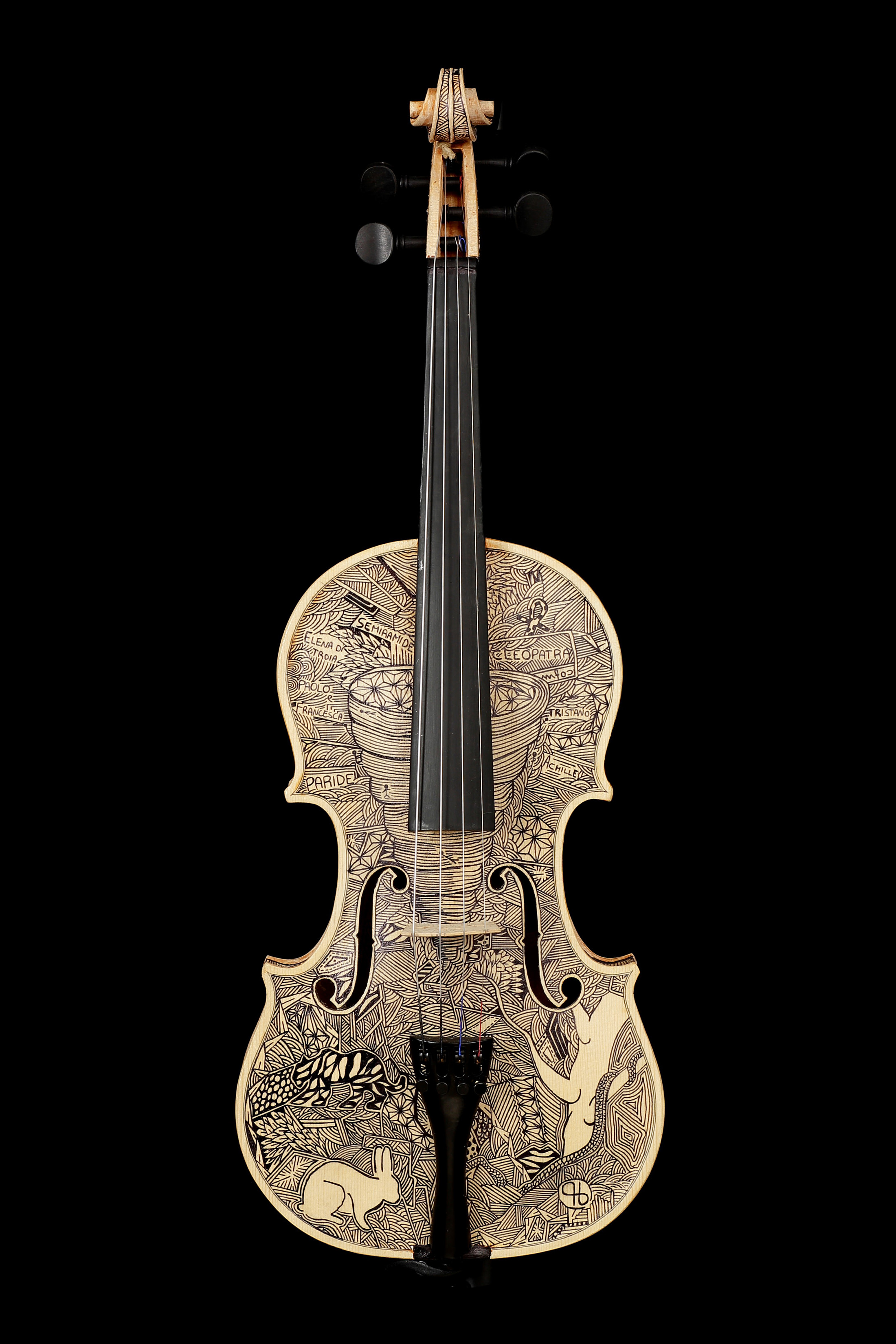
He likes to work by candlelight, fuelled by coffee, to a classical music soundtrack.
-
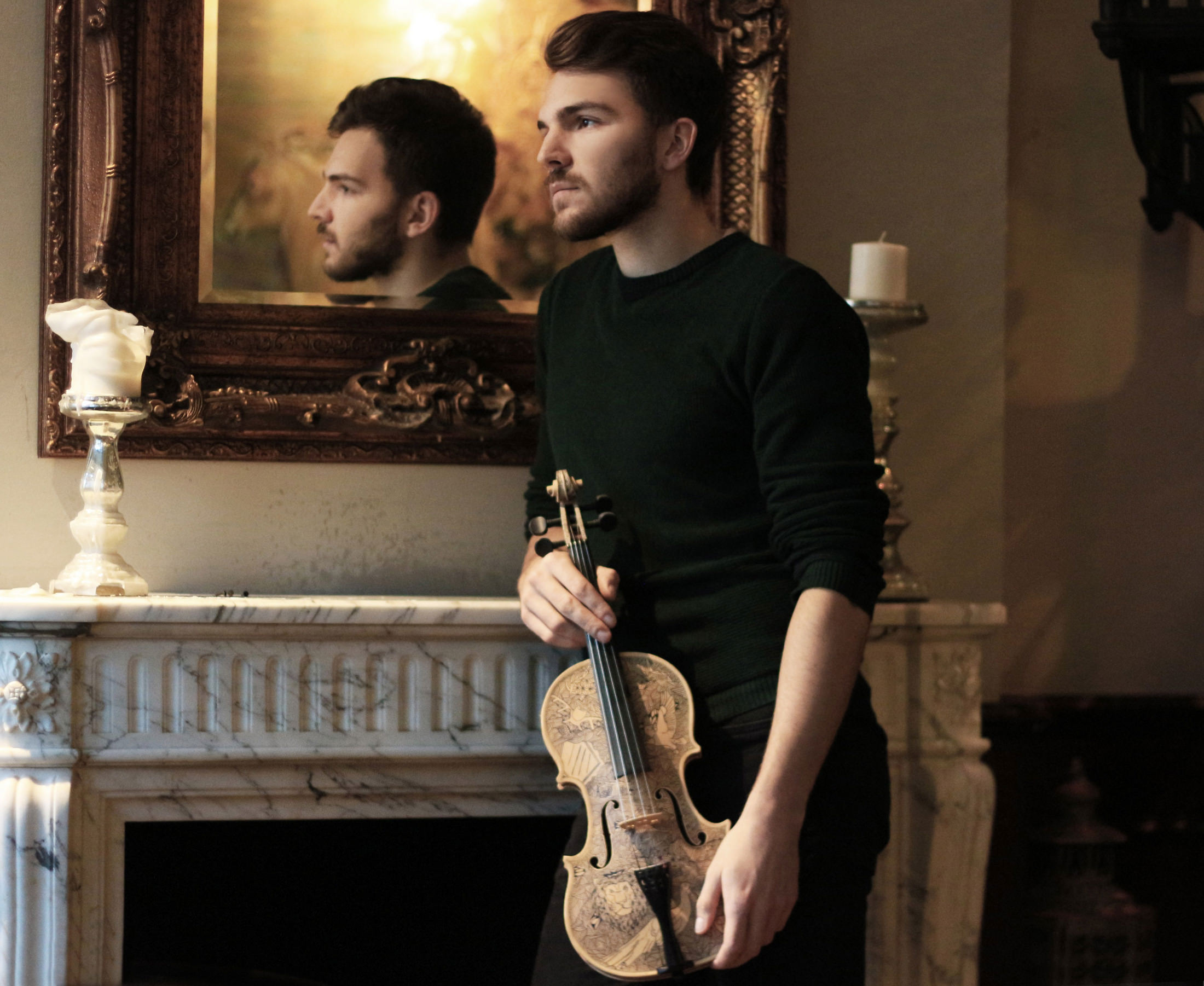
Frigo is formally trained in art restoration, having graduated from Venice’s Università Internazionale dell’Arte.
The Talent of Leonardo Frigo
Concerto in ink.

It’s a rare 15-year-old boy who wouldn’t incite his parents’ wrath if he drew all over a violin he’d just been given. “But all my family are artists, so they all supported me,” explains Leonardo Frigo, now 24. “I knew when I got my violin back then that I wanted to personalize it. So, I removed the varnish and started decorating it in black ink.”
While Frigo’s five years of violin lessons never amounted to anything, his evolving penmanship did. (He still plays the violin occasionally but, he laughs, for their sake never in anyone else’s company.) The London-based Italian artist specializes in intricately decorated violins, the delicately applied ink typically conveying, in pictorial form, a biography—either of an artist who inspires him, such as van Gogh or, of course, Vivaldi—or with special commissions, a history of the client’s family. Frigo is currently working on a personal project: 33 violins and one cello, each instrument displaying a chapter of Dante’s Inferno.

Frigo is formally trained in art restoration, having graduated from Venice’s Università Internazionale dell’Arte. “I love the opportunity to work with them [violins] every day and to give them a personality, a story,” he says. “What I draw could be presented on a canvas. But for me, it’s enhanced by being on a violin.”
Each of Leonardo Frigo’s intricately decorated violins takes roughly a month to complete.
Frigo doesn’t apply his nib to Stradivariuses, but nevertheless to good quality violins. Each art piece takes roughly a month to complete. He likes to work by candlelight, fuelled by coffee, to a classical music soundtrack. After stripping the finish of a violin, he treats the wood to control its porousness. “You have to do that so the ink doesn’t run off. I use a technique borrowed from art restoration, but I’m keeping exactly what I do a secret,” he says, and then sets to work with an old-fashioned dipping nib pen.
“Obviously the larger instrument [cello] gives you more space to work with,” says Frigo, whose work first garnered attention when it was selected for the Spoleto Arte incontra Venezia exhibition by influential Italian art critic Vittorio Sgarbi. “But a cello also gives you space on which to rest your hand when drawing. A violin is actually quite a small instrument—drawing on one can get, shall we say, very fiddly.”

Unsurprisingly perhaps, nearly half of Frigo’s clients are music enthusiasts. Most display their Frigo creation, though he is working on a rare commission by a Toronto-based professional violinist who wants to play the finished piece. “The violins are all perfectly playable,” Frigo stresses, “but most people are interested in them for their visual appeal. That’s why I don’t take on all the commissions I’m asked to do. Some of the requests are just a bit too trashy for me. I have to feel it. It shows in the ink.”
_________
Never miss a story. Sign up for NUVO’s weekly newsletter, here.


